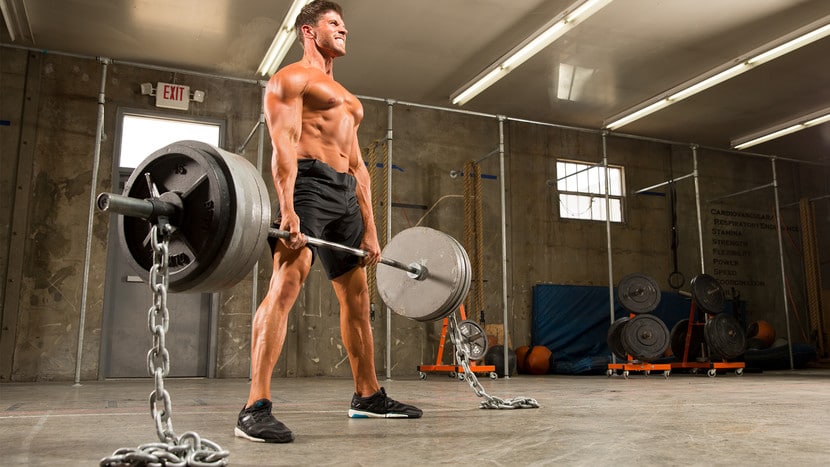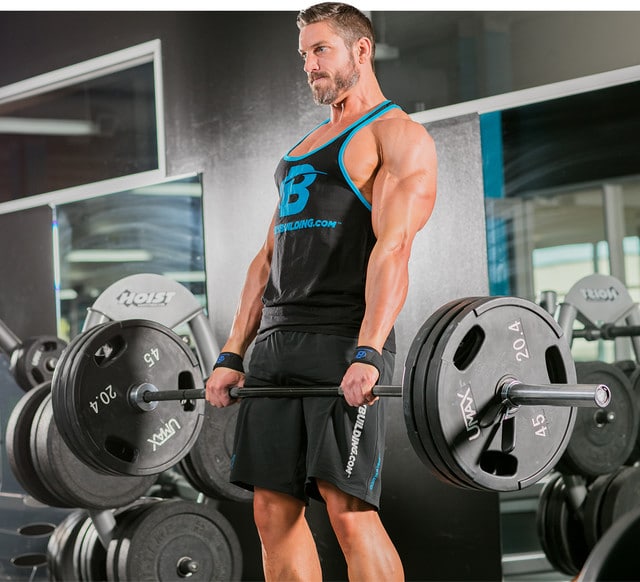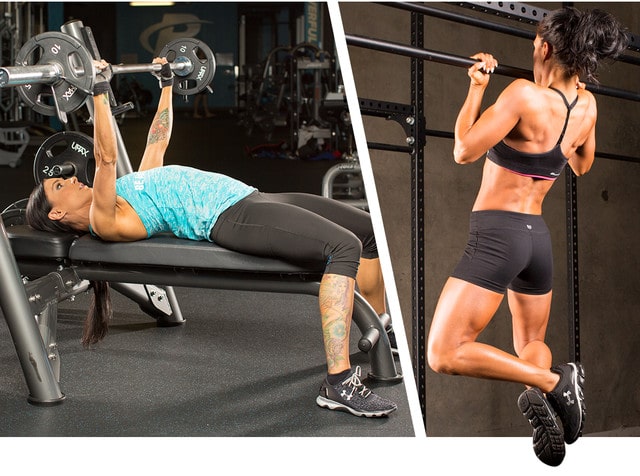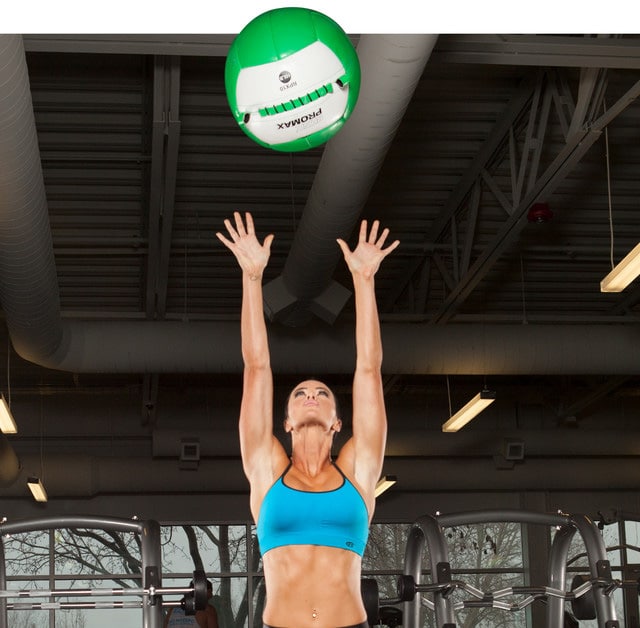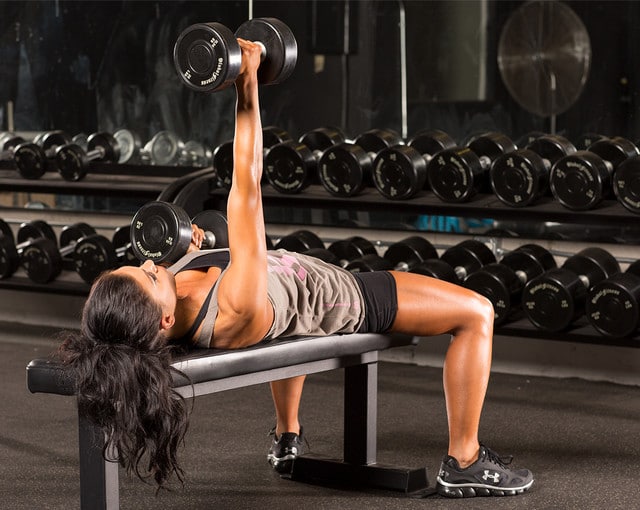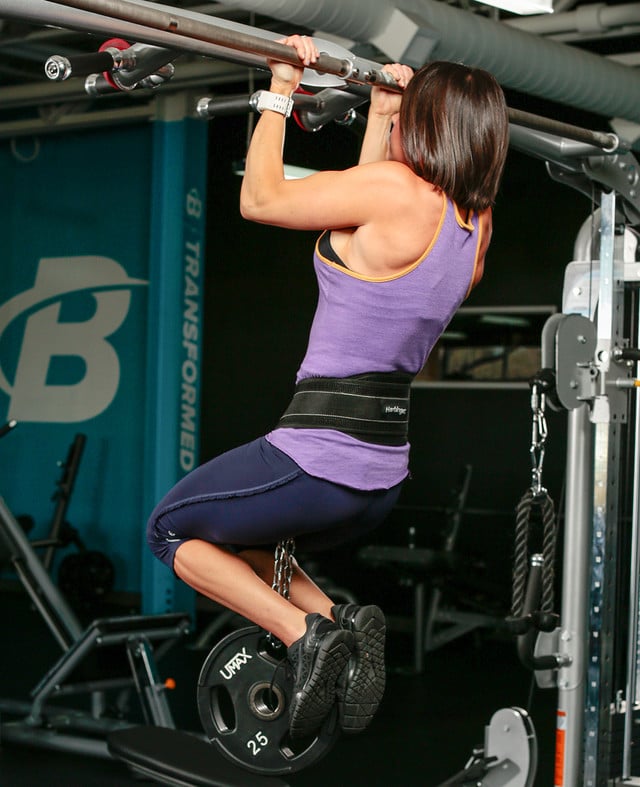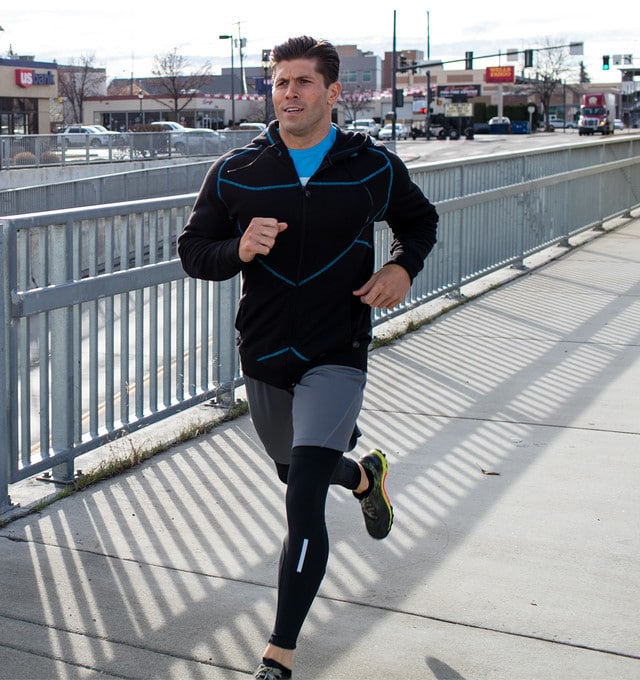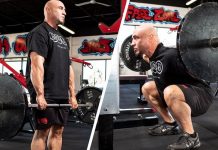If you limit yourself to a single definition of strength, you’ll limiting your potential! Become the ultimate version of yourself with this total approach.
People like to talk—and brag—about strength these days as if it’s easy to define. To hear them tell it, strength is just your one-rep max number on a certain lift, or a few select lifts. For certain people, it will always be “how much ya bench” and for others, it’s going to be how many pull-ups you can do—two standards that require very different definitions of the word “strength.”
As a strength coach, I tend to think of strength a little more strategically and break it down into types of strength. Here are the three types nearly anyone can benefit from and how to build them.
Type 1: Core Strength
Core strength almost sounds like a cliché at this point, but for those of us who work with athletes, it’s crucial. In fact, when it comes to finding that sweet spot of performance, safety, and quality of life, core strength is probably the most important kind of strength you can have.
What’s the big deal? First and foremost, your core ties together your upper and lower body. It’s not uncommon to see athletes whose upper or lower bodies are brutally strong in isolation, but who fall apart when asked to perform lifts—heck, or even a yoga class—that demands they tie the two together.
Second, core strength is critical for injury prevention. When the core is weak, humans have a natural tendency to default to a position of spinal extension—or leaning back—particularly at the low back. For many people, this precarious position is how they spend their days.
While not the major cause of injury in and of itself, being stuck in this position makes it very likely that you’ll deal with nagging aches and pains around your knees, hips, and lower back. Learning to control extension via better core control and strength will go a long way to keeping you healthy over time.
Last but not least, strengthening your core can take your performance to the next level. Many athletes find it’s the kind of “everything I did just got better” solution they didn’t know they were looking for. So, yeah, building a stronger core makes sense.
But what does a “strong core” mean? More than any other muscle group, a strong core must be balanced. It must be able to resist your spine’s tendency to bend to unsafe extremes in four ways:
- Anti-extension (to the back)
- Anti-flexion (to the front)
- Anti-lateral flexion (to the sides)
- Anti-rotation (twisting)
Training to prevent motion in each of these areas is crucial for building a strong, healthy, balanced core. And while there’s value in isolated core work, there are lifts you can incorporate into your regular workouts to build core strength where it counts. Here are my favorites for each of the fundamental directions:
- Anti-extension: Loaded push-ups
- Anti-flexion: Front-squat variations, deadlift variations
- Anti-lateral flexion: Offset farmer’s carries, suitcase deadlifts
- Anti-rotation: Single-arm dumbbell bench presses, unsupported dumbbell rows
Type 2: Maximal Strength
You may not aspire to be a world-class powerlifter, and that’s fine. In fact, as I explained in my article “8 Gym Benchmarks Anyone Can Achieve,” I don’t think you even need to know what your one-rep max is to build real strength. You can just plug your 5-rep max, or a weight you can lift with perfect form 5 times, into a calculator to get an estimate of your one-rep max. Is it totally accurate? Not necessarily. But it’s good enough for pretty much all of us who aren’t competitive lifters.
But to be clear, the fact that I’m not asking you to grind through do-or-die nosebleed singles doesn’t mean you shouldn’t be striving to put more weight on the bar over time.
Maximal strength training is important, because it emphasizes the nervous system, not just the muscular system. When you train with heavy weights, your body is forced to become more efficient, turning the right muscles on and off in a certain sequence.
But beyond getting stronger, maximal strength training also has a huge carryover to speed and power development for athletes. It’s common for us to start training young athletes with the most basic exercises, putting minimal emphasis on speed or power. Then, lo and behold, as the athlete gets stronger, we see a direct and immediate carryover to their speed and development as well.
This proves the power of the nervous system. It’s great to build muscle and look good, but the nervous system is the “go” to the muscular system’s “show.”
When training for maximal strength, your exercise selection is critical. Biceps curls and triceps kick-backs aren’t going to help you here. You need to focus on big-bang, compound lifts that allow you to put weight on the bar week after week.
My primary four exercise variations for building strength are:
- Squat variations (front and back)
- Deadlift variations (sumo, conventional, or trap bar)
- Bench presses
- Chin-ups
If you based your training around those four lifts for a year, with the sole goal of getting stronger at them, I guarantee you’d see huge changes not only in your strength, but also your physique.
Type 3: Explosive Strength
What’s the first physical quality we lose as we age? Sure, you’ll lose some muscle and strength, but the first quality you lose is actually power, or the ability to move things quickly.
While not all of us compete in sports as we age, that doesn’t mean we don’t want or need the ability to run fast, jump high, or move quickly. It ties together with the two other types of strength discussed into a coordinated, athletic package, making you the best weekend warrior you can be. This is why explosive training was a fundamental part of my article “The Program that Will Make You Better At Any Sport.”
I’m going to oversimplify this a bit, but explosive strength can be divided into two categories:
- Strength-speed: Moving heavy things as fast as possible
- Speed-strength: Moving light things explosively
Strength-speed would include exercises like the Olympic lifts, or variations of the clean and jerk or snatch. These aren’t as heavy as a maximum-effort deadlift or squat, so the bar speed is considerably faster.
You don’t need to learn the full lifts to get the benefits. Even something as simple as a hang clean from the knees will go a long way toward making you more powerful and explosive.
On the flip side, you’ve got speed-strength, or moving lighter implements as quickly as possible. When it comes to speed-strength, I favor med-ball throws and jumping exercises.
Med-ball throws are fantastic, because you can perform not only total-body variations, but also variations that are specific to the upper body. It’s easy to train lower-body power, as there are so many options to choose from, but exercise selection for upper-body power can be a bit more difficult.
Jumps are another option that works incredibly well. But don’t feel the need to jump right into max-effort vertical jumping. Start with basic progressions like low box jumps, where your only focus is on sticking the landing, and you step down gently after each rep. The box is a great tool—when used correctly—as it reduces the eccentric forces and impact, especially early on in a program.
I can’t stress this enough: You don’t have to be a competitive athlete to enjoy the benefits of power training. Emphasize it in your program throughout the year, and I guarantee you’ll not only feel more athletic, but you’ll have fun training.
How To Build These Types Of Strength Together
I’m a big believer in training everything at once while keeping certain priorities at the forefront. If your goal is to build all three of these types of strength, start with my template from “The Program That Will Make You Better at Any Sport” or “How To Build Your Own Workouts on the Fly.” Working in blocks of 4-6 weeks, make some strategic substitutions.
Phase 1: Accumulation Block (Core Emphasis)
The focus here is on building a brutally strong core and setting the stage for more strength and power development down the line. Include some basic power and strength training, but emphasize variations that challenge the core.
For example, instead of a barbell front squat, perform a double-kettlebell front squat. Instead of a bench press, perform a single-arm bench press. Instead of arm-supported or chest-supported dumbbell rows, I’d do unsupported dumbbell rows.
Basically, find a way to integrate your core into all of your primary movements. This will make sure you’re building a strong, balanced core in all planes of movement.
Wrap your session up with some isolated core training. Dead bugs, planks, and ab-wheel roll-outs are all fantastic here. Along with the strength work, this will put an emphasis on building your core in three dimensions rather than just focusing on either the posterior or anterior core.
Phase 2: Maximal Strength Block (Strength Emphasis)
Here the major goal is simple: To get stronger. On your power training, you might make some micro progressions to make the exercises more intense. Same goes for your core training exercises: Challenge yourself and make them a bit harder. But the real emphasis in this training block would be to get as strong as possible.
While I love unilateral variations , the goal here is more likely to put both feet on the floor, both hands on the bar, and move as much weight as you can with rock-solid technique on big lifts.
Whether it’s the front squat, back squat, deadlift, bench press, or weighted chin-up, make it a goal to add some weight to the bar each and every week.
Phase 3: Realization Block (Explosive-Strength Emphasis)
This is where things get fun. You’ve built a brutally strong, balanced core. You’ve gotten stronger and primed your nervous system in the process. Now it’s time to convert that strength to raw power.
The emphasis on this block should be speed and explosiveness. Run. Jump. Sprint. Throw medicine balls. Work on the Olympic lifts. Anything you can do that’s fast and explosive will work here.
Put your maximum strength and core training on the back burner. Maintain them, but don’t think about pushing the envelope. Once you complete a training block like this, chances are you’ll feel more athletic than you have in years.
The great thing about these three types of strength is the way they feed into one another. For instance, you’re not emphasizing core or max strength in Phase 3, but when you return to those goals in the future, don’t be surprised if you’ve improved there. You’re a more well-rounded, complete athlete now. Get ready to surprise yourself!

